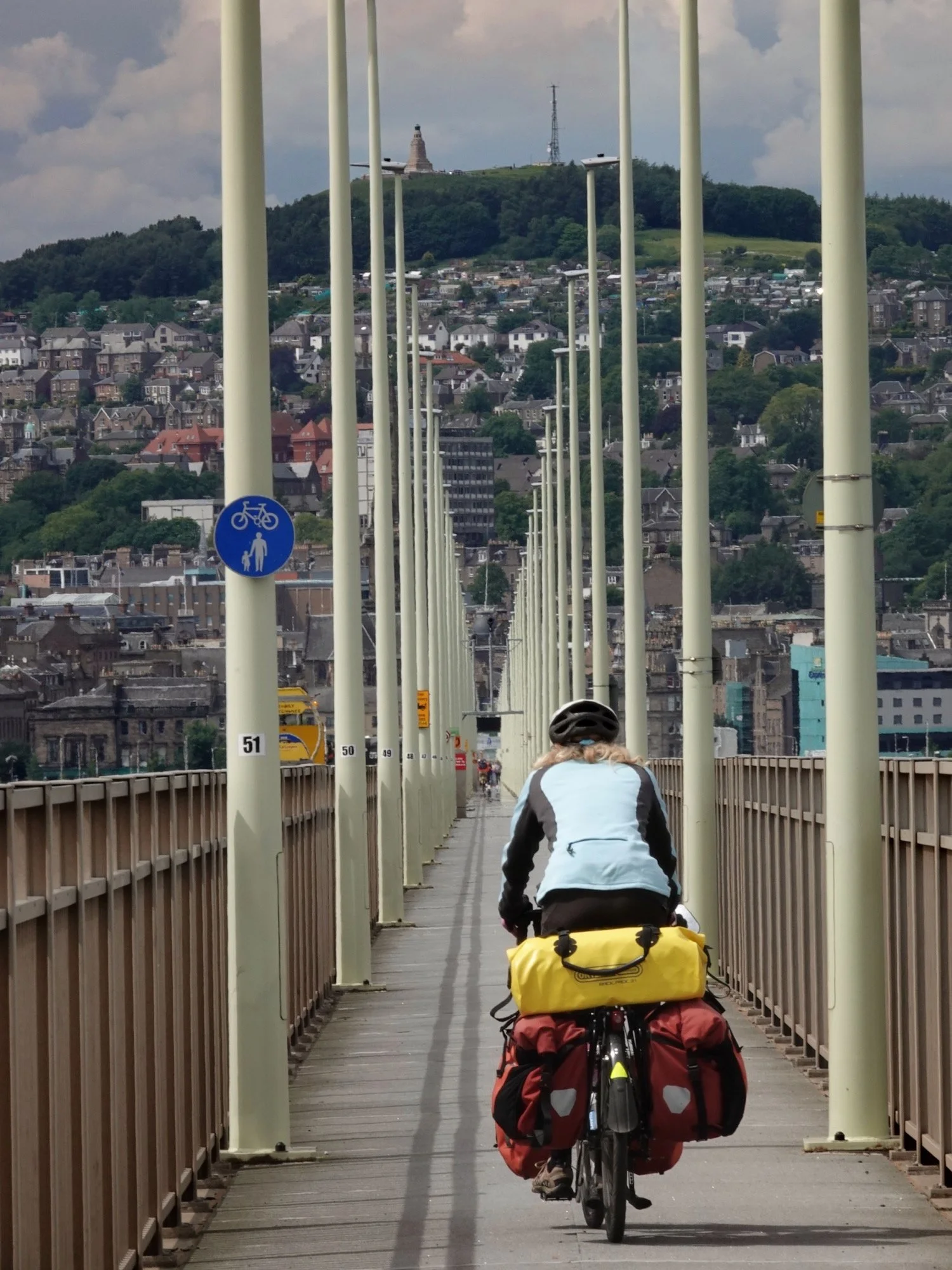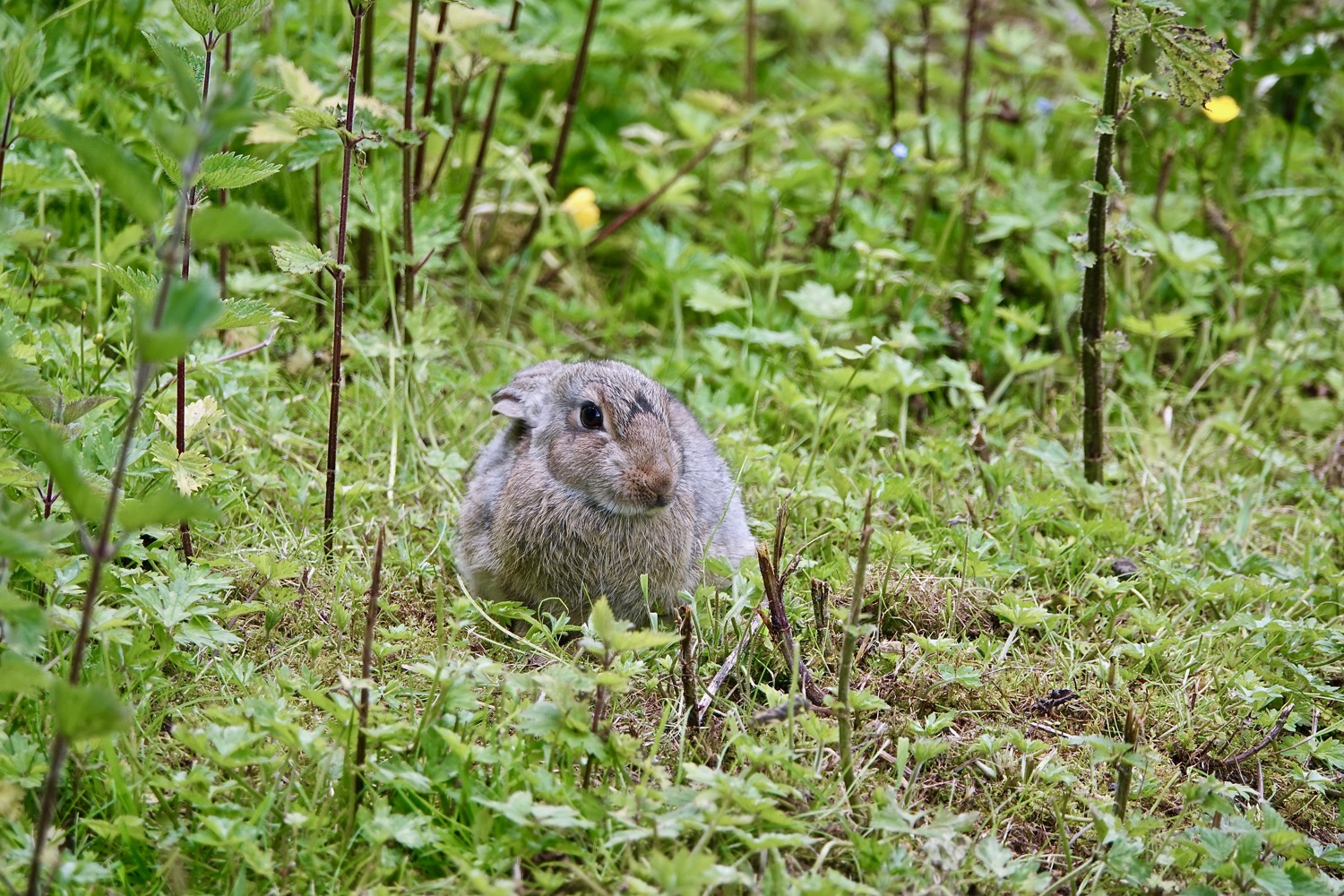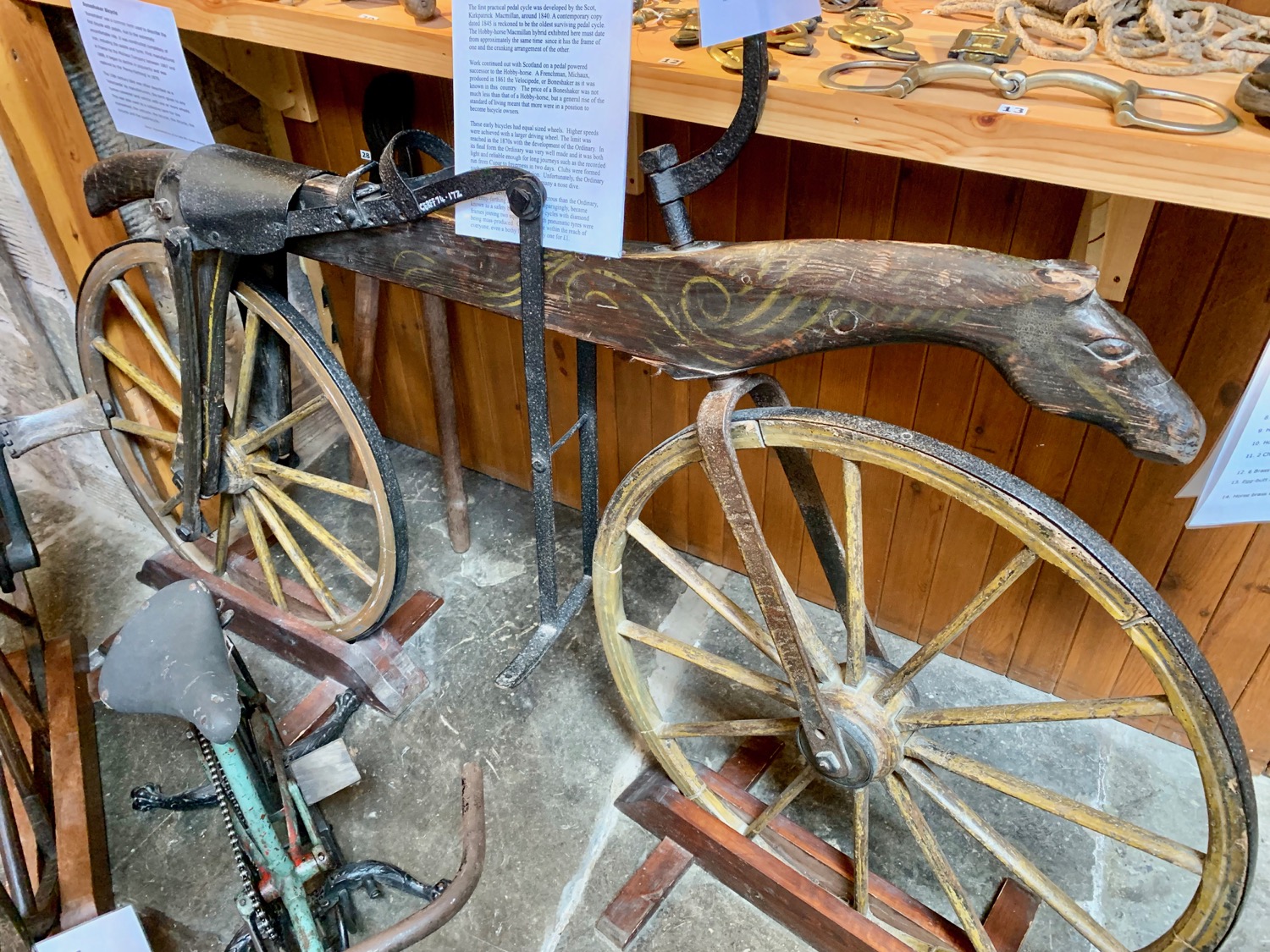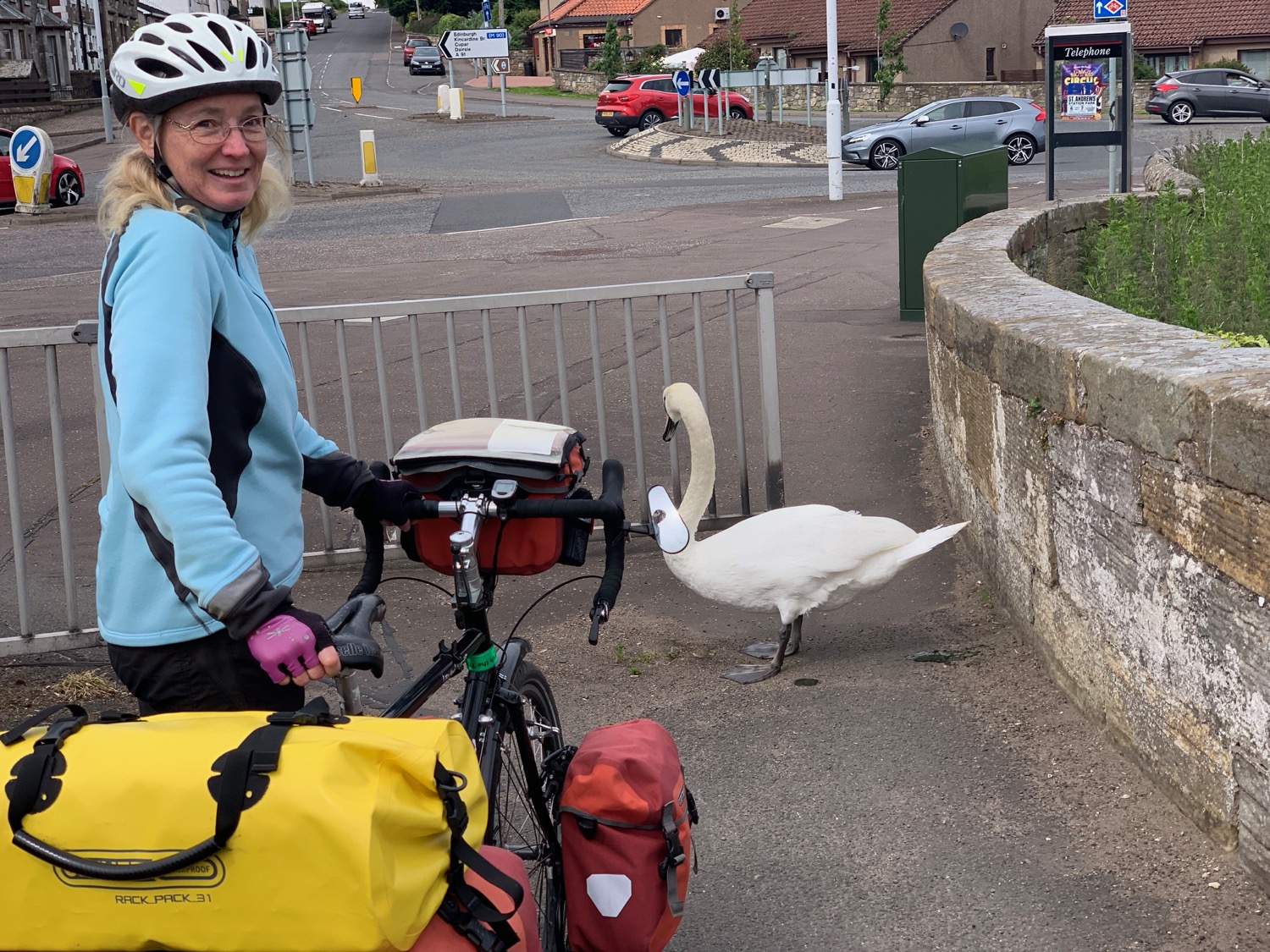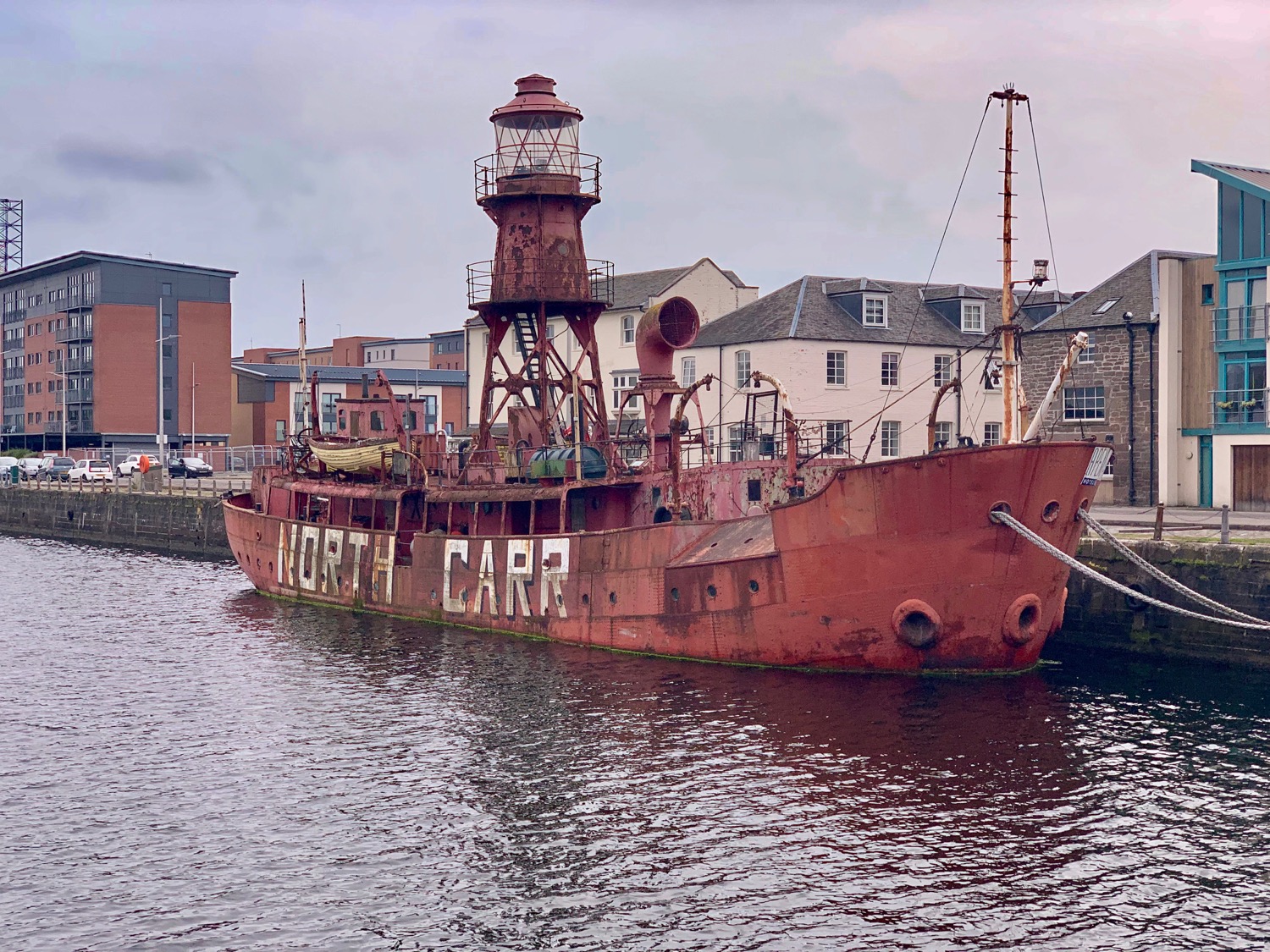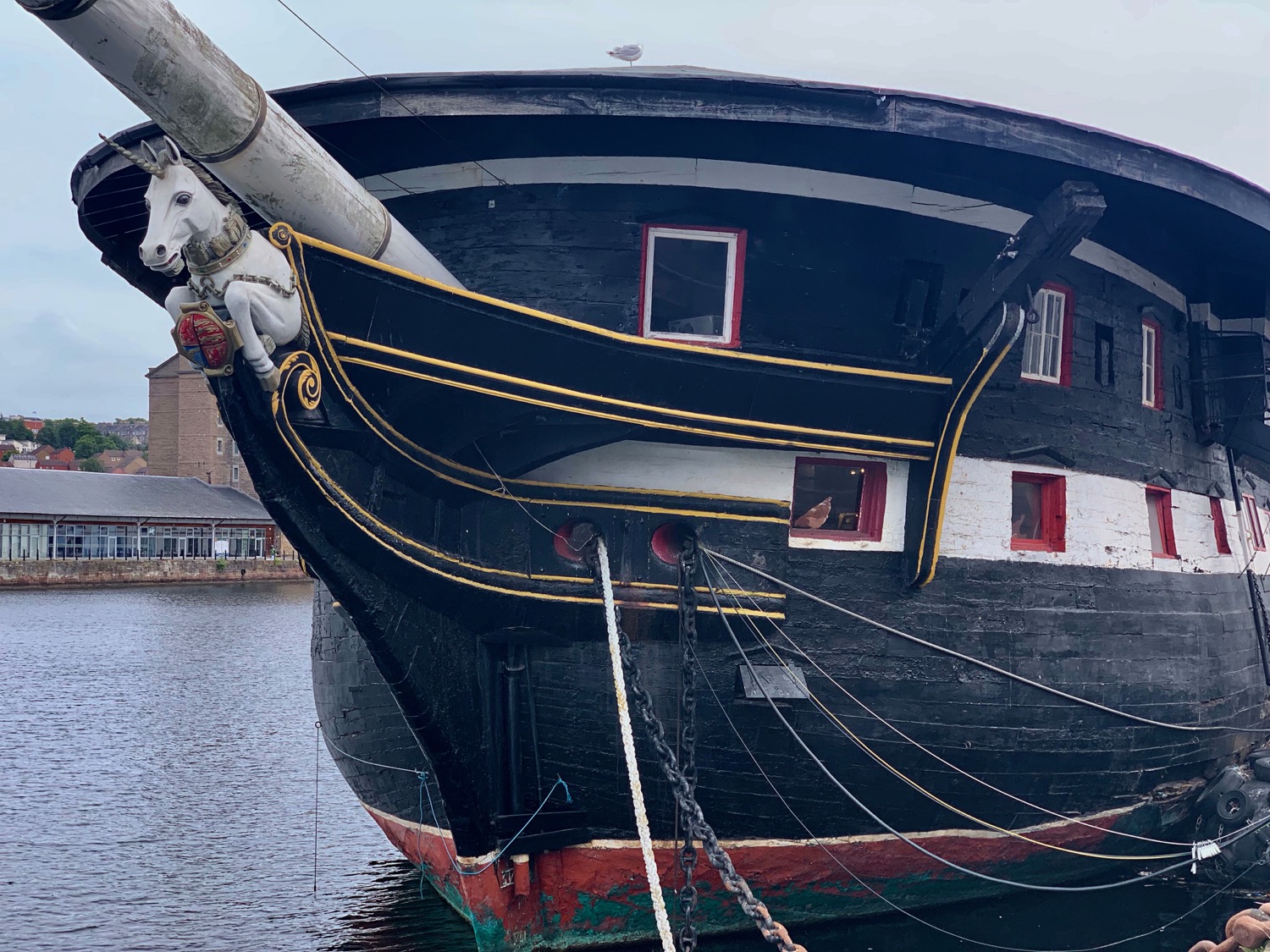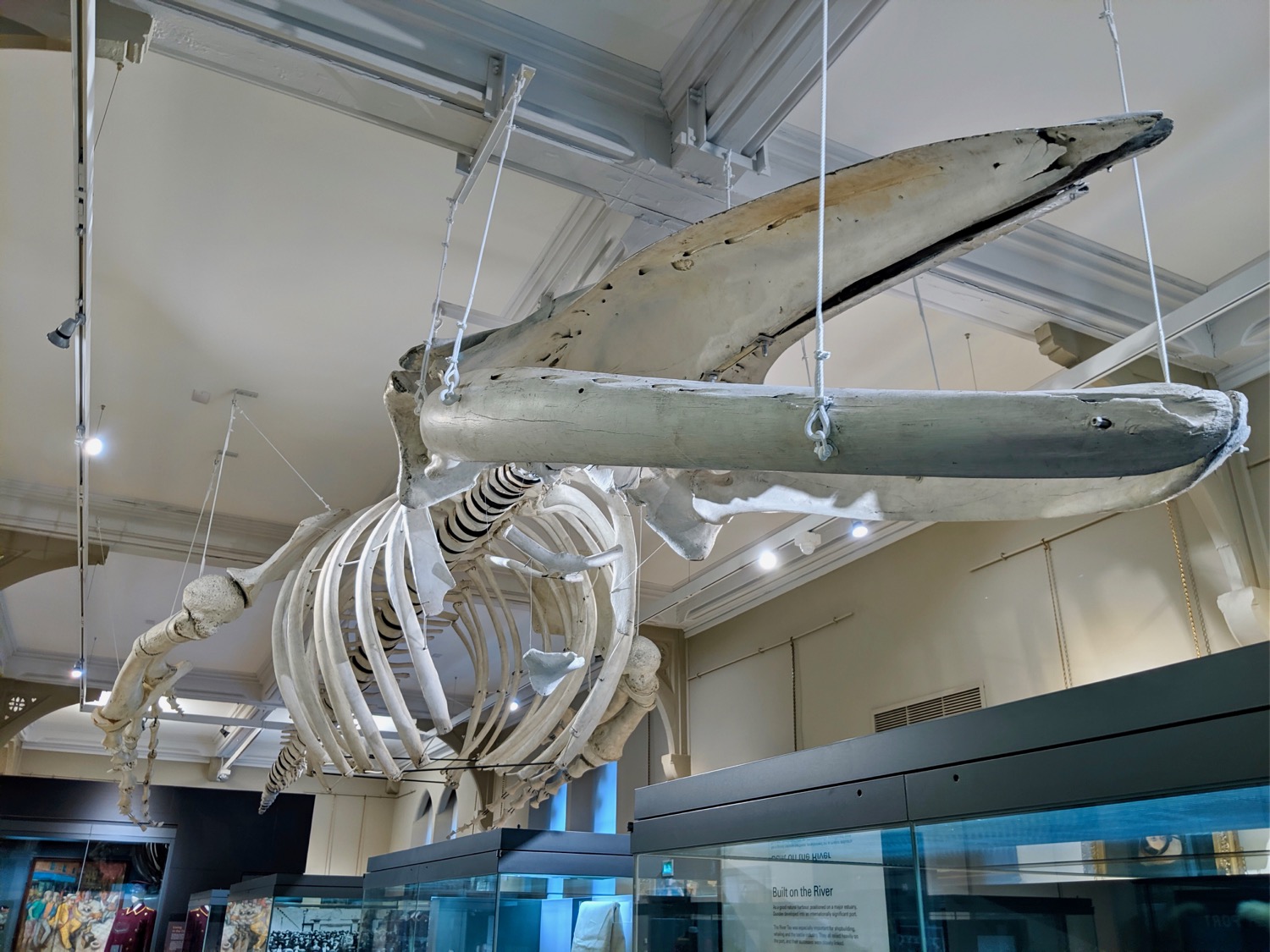Edinburgh to Dundee, Scotland: Kingdoms, Castles and a Cycling Sand Trap
19 - 24 June 2019
Edinburgh to Dunfermline (19 June 2019, 40.4 km, 25 mi)
It felt wonderful to be back on our bikes today. The long layover in Edinburgh was nice in some ways. For example, we used some of the time to take care of tasks like changing the bolt on a kickstand and repairing the shock cord in our tent poles. But we’re happy to be done with those things, and back on tour.
We had been staying in an apartment on the far, southeastern edge of the city. So to get back on national bike route 1 (EuroVelo 12) we had to ride across the heart of Edinburgh, and through its main shopping district. This time of year, Edinburgh’s city center is really chaotic. The sidewalks are crowded with shoppers, tourists, and people going about their business. The streets are jammed with cars and buses. And all the construction crews are out trying to build as much stuff as possible during the good weather - blocking roads and pedestrian walkways, and rerouting traffic. Plus, there aren’t many bike paths, especially in the old town. All of this made our navigation through the city complicated. We had to sharpen our focus to stay together and keep on track.
There wasn’t much time for sightseeing, but we did catch a glimpse of the Edinburgh Castle as we crossed the city. We’ll be back in Edinburgh in a couple of weeks, so we’ll visit the castle, and take photos then.
We crossed the River Forth on a long, high, suspension bridge from Queensferry. On the far side, we entered the Kingdom of Fife. Yes, that’s right. Fife is still commonly called a kingdom, even though it’s been more than 1,000 years since the region had its own king. I haven’t been able to turn up any really convincing explanations for why Fife still calls itself a kingdom. The most commonly cited reason is that it refers to a time long ago, before the Anglo-Saxons swept through. Back then, Fife was one of the main Pictish kingdoms. But that was an awfully long time ago. Perhaps it doesn’t really matter. It seems both grand and a bit quaint to call Fife a kingdom now.
The clicking sound being made by PedalingGuy’s bike for the past month had gotten worse. So in Fife, we stopped at a bike shop (Ryan’s Bike Surgery) to get it checked out. The mechanic was great. He diagnosed the problem, which is that one of the front chain rings is wearing out. That causes the chain to make a clicking noise when it lifts off the front ring under pressure. The shop didn’t have the right sized chain rings in stock, so the mechanic tightened the chain rings, and that helped. We plan to replace the chain rings (which have over 14,000 km on them) the next time we replace the chains - somewhere down the road in Europe. For one last bit of maintenance, we had him take our pedals apart which requires special tools we don’t carry. He then added some grease to the internal spindle which was completely dry. It turned out to be a pretty productive stop.
We dropped in on Ryan’s Bike Surgery to check out a persistent clicking noise coming from PedalingGuy’s chain. Inverkeithing, Scotland, UK. Copyright © 2018-2019 Pedals and Puffins.
Back on the road, PedalingGuy’s clicking noise has largely gone away. Yay! It’s been bugging us off and on since leaving London.
From there it was a quick ride to Dunfermline. Dunfermline was the Scottish capital before Edinburgh, and eighteen royals were buried in the nearby Abbey, including the venerated Robert the Bruce. Another famous person buried there is the mother of William Wallace. Even if you’re not from the UK, these are recognizable names. Both Robert and William are main characters in the movie Braveheart.
Dunfermline to Freuchie (20 June 2019, 50.8 km, 31.6 mi)
Our bed and breakfast served up a “full Scottish breakfast.” And how, you might ask, is that different from a full English breakfast? Well, they’re pretty similar, but not quite the same. A Scottish breakfast includes tattie scones, which are flat cakes made with potatoes (tatties). And instead of black pudding, they serve haggis (best not to ask what’s in that). We particularly enjoyed the fresh tomatoes, that the proprietor got from a friend’s greenhouse. What a treat.
During the first 10 km of our ride, we climbed a couple of hundred meters over a ridge through the Blairadam Forest. The ridge top was covered by a spruce/fir forest, interspersed with open grasslands. We haven’t seen that kind of mountain alpine habitat since crossing the Pyrenees. The land in Blairadam has been managed for wood production for more than a century, so the trees were mostly planted in single-species groups. But there were patches of different types of trees, creating some variety. It was invigorating to ride through the crisp mountain air, enjoying the alpine scenery.
On the back side of the mountain ridge, we careened down a rapid descent to Loch Leven, the biggest lowland lake in Scotland.
Descent from Blairadam Forest towards Loch Leven. Cleish, Scotland, UK. Copyright © 2018-2019 Pedals and Puffins.
Arriving at Loch Leven, Scotland, UK. Copyright © 2018-2019 Pedals and Puffins.
We thought we had seen a lot of rabbits when we camped at Thorntonloch a couple of weeks ago. But that campground had nothing on Loch Leven. We saw a huge number of rabbits grazing peacefully on the lawn of a wool textile factory as we approached the lake. No joke, we counted over 80 rabbits, including a couple of black ones.
Just a couple of the 80+ rabbits we saw grazing on the lawn of a wool factory. Kinross, Scotland, UK. Copyright © 2018-2019 Pedals and Puffins.
By now, the cool, damp morning had turned into a lovely day. We enjoyed wonderful views of the lake as we skirted around the western and northern shores.
Loch Leven, Scotland, UK. Copyright © 2018-2019 Pedals and Puffins.
On an island in the lake stands an old fort called Lochleven Castle. Here we had our second encounter with Mary Queen of Scots. Following her scandalous third marriage (to the guy who owned Hailes Castle, which we passed on our way to Edinburgh), a group of noblemen had the queen imprisoned at Lochleven Castle. There, they forced her to abdicate her throne. After several failed attempts, Mary escaped the island a year later, disguised as a servant. She fled to England, and never returned to Scotland after that - at least not as a living person. Lochleven is one of several places that are said to be haunted by the queen’s restless spirit.
Lochleven Castle, out on an island in Loch Leven. Mary Queen of Scots was imprisoned in that tower. Scotland, UK. Copyright © 2018-2019 Pedals and Puffins.
After a picnic lunch in the town park at Strathmiglo, we cycled up into the pine forests of Lomond Hills Regional Park. The sides of the trail were blanketed with wildflowers, especially the big, bright, cornucopia-shaped foxglove flowers. And this is the only place we’ve seen lots of blooming rhododendrons. The northern slopes were covered in a purple sheen, created by the great clusters of violet flowers.
We thought we might wild camp in the park. Scotland’s roam free land laws allow walking and camping anywhere unless posted otherwise and posted signs are very rare. But our route just skirted the northern edge of the park, and we couldn’t find a place to camp that was away from people. There were quite a few homes, a school, and a cricket club building close to the trail. Several running groups lumbered by. And the woods along this part of the route were hemmed in by fences. There just wasn’t anywhere to camp that would offer a little bit of seclusion.
So we pushed on to the town of Falkland. In the first hotel that we stopped at, the proprietor warned us that it would be noisy because it was Trivia Night, and all of the rooms were over the bar. You know it’s going to be bad when the proprietor gives you a heads up. Usually they claim that all the rooms are quiet even when they are not. The next hotel we tried was full. And that was about it for places to stay in Falkland.
Before leaving town, though, we did stop for a quick look at Falkland Palace. Built during the Renaissance to serve as a royal getaway, it was a favorite home for Mary Queen of Scotts in her youth. While there, she would practice falconry and hunting in the Lomond Hills, and play tennis at the palace.
Falkland Palace. Scotland, UK. Copyright © 2018-2019 Pedals and Puffins.
We headed down the road again, and finally found a room at a hotel in Freuchie. The room was tucked back in a quiet, residential area, so it was wonderfully quiet.
Freuchie to Strathkinness (21 June 2019, 26.2 km, 16.3 mi)
As a consequence of abandoning our attempt to wild camp yesterday, we ended up cycling an additional 10 km down the road to find a place to sleep. That, in turn, made today a very short riding day. We biked at a leisurely pace, and even took some time to visit a museum along the way.
The ride felt hilly. Even though none of the rises were that high, the geology of the area created the feeling that we were going uphill more than downhill. We were riding eastward across a series of ridges that have abrupt inclines on their western slopes, but descend gently to the east. As a result, we had to push hard up the steep (western) side of each ridge, but would coast slowly down the eastern side. We enjoyed the long descents, and they gave us plenty of time for recovery between the leg-pumping ascents.
Cresting a climb into Craigrothie, Scotland, UK. Copyright © 2018-2019 Pedals and Puffins.
We stopped in the small town of Ceres to visit the Fife Folk Museum. A sign near the museum confirmed that the Kingdom of Fife hasn’t had its own king since the 10th century. I guess their motto could be, once a kingdom, always a kingdom. It does have a certain ring to it.
Town of Ceres, in the Kingdom of Fife, Scotland, UK. Copyright © 2018-2019 Pedals and Puffins.
We wandered through the disparate museum exhibits, picking up bits and pieces of information about the area’s history. For many years, spinning and weaving were among the biggest industries in Fife. Before there were industrial-scale looms, more than 10,000 “cottage weavers” kept a hand loom in their homes. Most homes had at least one weaver in the family, and all together they managed to produce a huge amount of wool, flax and woven cloth that was exported across Europe. Like many local museums, it also was chock full of stuff that had been collected from within the community.
The Fife Folklife Museum includes this old weaver’s cottage, where residents used to both live and work on spinning wool and weaving linen. Ceres, Scotland, UK. Copyright © 2018-2019 Pedals and Puffins.
As we approached the campground near Strathkinness, we were surprised to see the sea. The town of St. Andrews, which is on the coast, is about 6 km away - too far to see when the land is flat and covered with trees. But the campground is perched on a hill about 100 meters high, and the land slopes away towards the sea with no hills in between. So we could see a long way towards the horizon. To the north, we had a lovely view of the mouth of the River Eden, which flows down from the Lomond Hills Regional Park.
We stayed at a campground with a fantastic, panoramic view. To the east, we could see the skyline of St. Andrews, Scotland, UK. Copyright © 2018-2019 Pedals and Puffins.
In the evening, we walked the 1.5 km into Strathkinness, soaking up the view of the woodlands sloping down to the River Eden and St. Andrews. At the edge of town, we sat on a bench and watched the evening light start to fade before heading back to camp.
Strathkinness to Dundee (22 June 2019, 49.8 km, 31 mi)
We awoke to a beautiful morning. We sailed down the long, straight descent into St. Andrews, covering nearly 7 km with hardly a pedal stroke. It was fabulous.
If you’ve heard of St. Andrews at all, it’s probably because the city has claimed the title of the birthplace of golf. And boy, it is a golf-crazy town. There are two private golf courses and seven public ones. And a hotel we passed in town even had a putting green on its front lawn.
We headed to the waterfront, and found a bench overlooking the North Sea and the Firth of Eden where we ate our breakfast. It was only after we’d finished eating that we realized we were sitting on a bluff right above the British National Golf Museum. It’s tucked back into the cliff, so you don’t see it right away if you approach from the top. We didn’t go inside the museum, but it looks pretty impressive from the outside.
Breakfast overlooking the North Sea in St. Andrews, Scotland, UK. Copyright © 2018-2019 Pedals and Puffins.
On our way out of town, we thought we’d try deviating from the official route to bike around the famous St. Andrews Links. The golf courses occupy a broad spit that juts out into the Firth of Eden, and it looked like a road might go all the way around the edge of the spit. At first it was easy going, as we cycled along the flat, paved road.
At about 3 km, right near the tip of the spit, the road ended, but you could continue around the edge of the golf course on a footpath. We’re game for just about anything, so we gave it a try. But it turned out to be a cycling sand trap. The sand in the path was very soft, and the ruts were so deep our panniers were dragging on the sides of the sides of the troughs. After going about 100 yards, discretion became the better part of valor and we turned around, heading back to the main route.
When we reached the bridge over the River Eden, we encountered an unexpected obstacle - a territorial swan. Now, if you’ve never faced down a hissing swan, you probably won’t appreciate how much of an obstacle this can be. When they’re mad, swans have a nasty bite. And I managed to make this one mad. He raced me to the gate at the end of the bridge before deciding that this was far enough, and he would stand his ground. Then the hissing and head bobbing started. I didn’t really want a confrontation, so I backed off to let the swan regain his composure. After a minute or two he decided, somewhat reluctantly, to let us pass. Then he strutted back onto the bridge, head held high. We got the impression he was pretty proud of himself for chasing us off.
After crossing the River Eden, we cycled into the Tentsmuir Forest. We were suddenly surrounded by big groves of pine trees, with a deep blanket of bracken fern on the ground. This park is extremely popular, and we could see why. The forest is really beautiful, lush and green. There were lots of people out walking, cycling and driving on the roads.
About 4 km into the woods, we stopped in the main parking area. At a small stand, two ladies were selling freshly-made crepes. So we decided to give ourselves a treat and have crepes for lunch. In the picnic area, we were surrounded by runners who had just finished a 5 km charity race through the park, and were still wandering around in their running clothes and numbered bibs. Another large group burst into a round of “happy birthday,” apparently celebrating the big day with a barbecue in the woods. It was a lively scene.
From there we biked north, paralleling the beach. This part of the ride was very reminiscent of the Landes Forest in France, but with the ocean on the right instead of the left. The cycle path through the forest was a fun roller-coaster of quick descents and ascents, over the old sand dunes held in place by the forest.
When we reached the mouth of the River Tay, we turned west and headed inland along the river. After riding through the picturesque town of Tayport, we rode steadily uphill to catch the Tay Road Bridge into Dundee.
The cycleway on the bridge is interesting because it lies between the two directions of traffic, instead of being on one side. So for a couple of miles. you are riding down the center of a high-speed, four lane bridge.
Crossing the Tay Road Bridge. We’re riding down the center of the bridge, with fast moving traffic just beyond the fence on both sides of the path. It feels kind of like riding through a tunnel. Dundee, Scotland, UK. Copyright © 2018-2019 Pedals and Puffins.
We got a room in the Hotel Indigo in Dundee, which is housed in an old factory building. That makes for a good, sturdy hotel. The walls and floors are solid concrete and bricks, helping to keep the rooms peacefully quiet. And the ceiling in our room was made of high, brick arches, creating an almost chapel-like atmosphere. Our room was relatively high up, providing us with a view onto the roofs of the surrounding buildings.
From our hotel window we watched some local Herring Gulls raising their family on a nearby rooftop. Dundee, Scotland, UK. Copyright © 2018-2019 Pedals and Puffins.
Layover in Dundee (23-24 June 2019)
We spent two days hanging out and exploring Dundee. Walking along the waterfront, We soaked up some of the nautical-themed sights.
In the City Quay, there is a water park with a slip-and-slide challenge course. We had fun watching a couple of families trying to negotiate their way around the obstacles. One part, where you had to use a rope to pull yourself up to the top of a slide, was particularly difficult, and it took some of the people quite a while before they figured out how to get up to the top. There was definitely a special technique to it. One poor person slid and spun around for at least 10 minutes, trying to haul herself up. Eventually she got the hang of it, and made it to the top.
Adventure H2O water park. It’s apparently harder than it looks. Dundee, Scotland, UK. Copyright © 2018-2019 Pedals and Puffins.
We were surprised and delighted to discover that Dundee was hosting a taping of the Antiques Road Show along the waterfront. That’s the public television show where people bring in stuff from their attics, to get it appraised on camera, by experts. Hoards of people had shown up with heirlooms and antiques, hoping that their item would turn out to be valuable, or at least special in the world of collectors. We watched the filming of an appraisal of an old Chopper bike, a glass vase with silver tea set, and a rusted, but impressive looking, sword. There were lots of stations set up with appraisers, where stuff was being evaluated off-camera. It was cool to get a peek inside the Antiques Road Show process, and see what people brought to have appraised.
Other sights we visited included the V&A design museum, which features a wide array of items by Scottish designers, and the McManus Museum which isn’t that big, but covers a lot of ground - everything from the history of Dundee, to collections of art from India and Egypt, to a natural history wing full of skeletons and stuffed animals.
Our second day in Dundee it rained heavily all day. We later learned that there was flooding in Edinburgh. We were glad to have the time to hunker down and stay dry. There’s still plenty of time to make it to Aberdeen on schedule.
